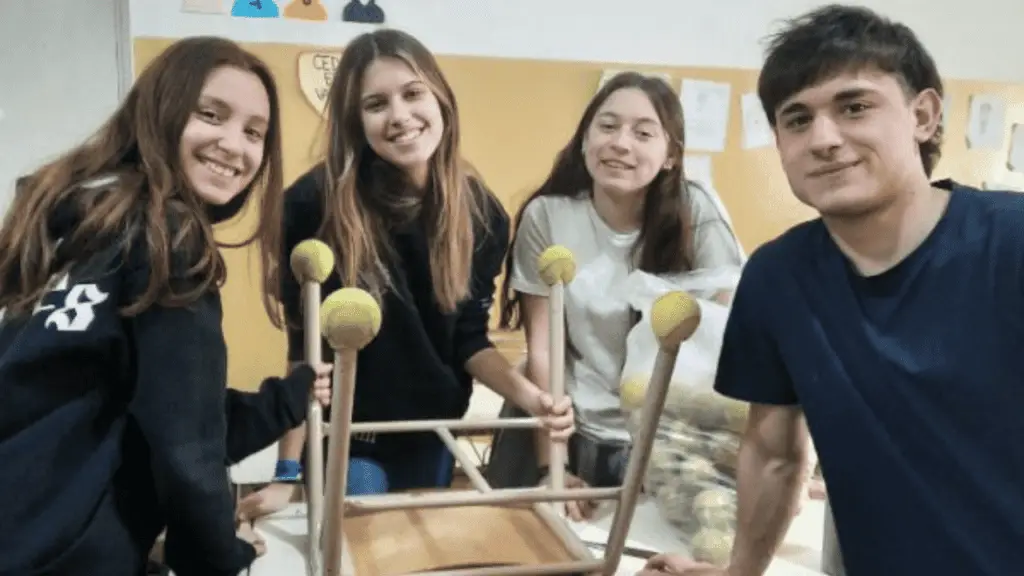Project Overview
Our groundbreaking student-led inclusion project at Santa Inés School in Argentina is revolutionizing how schools approach SDG 10: Reduced Inequalities. This innovative initiative empowers students to create practical solutions for fostering inclusive environments, from adaptive furniture to community outreach programs. This project, led by teacher Gisel Crespo in Argentina, focused on SDG 10: Reducing Inequalities. Students aged 15-17 from Santa Inés School used design thinking principles to address inclusion and diversity issues in their school and community.
Key Achievements
- Empathy-Driven Research: Students analyzed real-life situations and interviewed adults with different conditions to understand inclusion challenges.
- Innovative Solutions:
- “Music for a Cause”: Created a song promoting inclusion.
- “Pictograms at School”: Developed visual aids to improve communication.
- “Adaptive Furniture”: Collected 230 tennis balls to modify desks and chairs for inclusivity.
- Community Engagement: Collaborated with local government, autism institutions, and health organizations.
- Global Recognition: Selected for presentation at the UNESCO and IFIP “Global Inclusive Schools’ Forum” in Paris, 2024.
Learning Outcomes
- Enhanced critical thinking and empathy skills
- Developed civic engagement and advocacy skills
- Gained practical experience in project management and community outreach
- Improved understanding of diverse perspectives and real-world challenges
Impact
The project not only raised awareness about inclusion but also implemented tangible changes in the school environment. It demonstrated the power of student-led initiatives in addressing complex social issues and inspired other schools to replicate the ideas.
“This project has taught students many important things, such as understanding different realities, dealing with real-life situations, and feeling a sense of belonging to the world.” – Project Impact Statement
“It showed them how useful English can be in connecting with others and making the world a better place.” – Reflection on Language Skills
Methodology
The project followed a structured design thinking approach:
- Empathize: Shared real stories and engaged with diverse individuals
- Define: Researched inclusion in school and town
- Ideate: Brainstormed actionable ideas
- Prototype and Test: Developed multiple solutions
- Present: Shared results with school, community, and beyond
This comprehensive approach ensured that students were actively involved in every stage of the problem-solving process, from understanding the issues to implementing and sharing their solutions.


